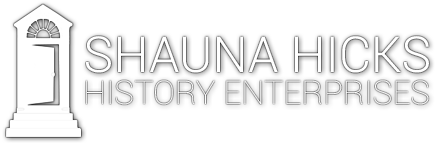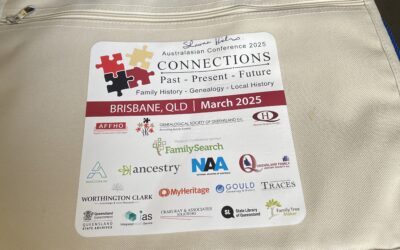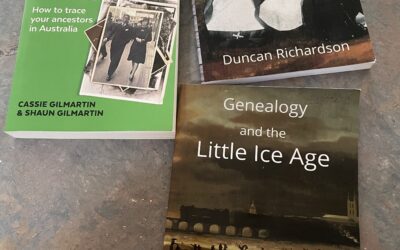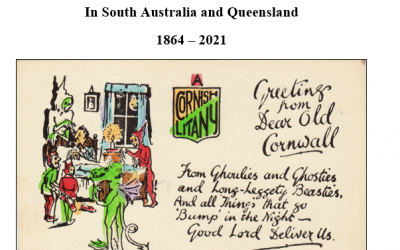This blog challenge is to stimulate my own genealogy blogging efforts in 2014 by focussing on a different kind of genealogical record each week. I wanted a challenge that reflected my own archival background as well as my own genealogy interests and there are probably lots of other records that I could have included. The challenge has an Australian focus but most of these records will be found just about anywhere in the genealogy world.
The 52 different types of genealogical records I finally decided on are listed in no particular order (each week will be a random surprise). Originally I planned to do this over 52 weeks but I now realise that I have to factor in travel and illness so it will continue a little bit over a year. Anyone is welcome to do all or part of this blogging challenge. Let me know if you are participating and I will put a link to your post under each week’s challenge.
So far I know of five bloggers who are taking up the challenge and I have put links to their individual entries at the end of each week’s blog if they have submitted something for that week. Thanks Judy Webster, Sharn White, Cassmob, Anne and Sharon for participating and encouraging me to keep up the blog challenge myself!
Also participating in this blog challenge:
Campaspe Library Week 10
Sharon Week 10
Links to Week 1 Military Medals Week 2 Internal Migration Week 3 Probates (wills and administrations) Week 4 Memorial Cards Week 5 Family Stories Week 6 Land Records Week 7 Local Histories Week 8 Diaries Week 9 Inquest Records
Week 10 Occupation Records
This week’s topic looks at occupations and sometimes what our ancestors did for a living can lead to all kinds of documentation depending on what their job or profession was. I am going to look at my great great great grandfather John Carnegie who was an oysterman. I originally thought that it would be very hard to find out anything about oyster farming.
I knew from land records that John had selected to land selections on Pumicestone Passage near Toorbul and those files revealed that he had a house, garden and orchard on the land. Other documents told me he was an oyster farmer. For many occupations you need a government license so a good starting place is the government gazettes.
For Queensland these are freely available online at Text Queensland: Queensland’s Past Online for the period 1859 to 1900. A search revealed a number of references to Carnegie. For example, in the Queensland Government Gazette for 16 March 1901 there is a list of licenses issued under The Oysters Act of 1886. In this instance it is a four column table listing employees, licensees, the names of their boats and the number of their license during the month of February 1901. J Carnegie is listed as the employee (this could be John or even his grandson James – it is always hard to know when only an initial is used), Mrs Davis is the licensee (this is probably his married daughter Clara), the name of their boat is the Clara and the number is 45.
Licenses were usually granted on an annual basis so it is possible to check each year for any variations. It is especially useful to know the start and end dates as these can often pin point when someone moves into an area or starts up in the job and when they retire, die or move elsewhere. Although reading government legislation can be a little dry and boring, it can be useful to learn what type of records were required to be kept under the Act and to then learn if those records have survived or were published in the Gazettes or elsewhere.
Where an occupation was monitored by the Government, there can also be annual reports published in Votes and Proceedings which are normally located at the State Library or possibly the State Archives. A search of these publications for the period 1884-1891 and 1900 revealed a number of references to John Carnegie. For example, in 1884 John held two banks north of Ninghi Creek and the inspector wrote that John ‘has gone to extraordinary labour on his selection digging drains and embankments. He has about 500 bags on it’. In 1885 it was reported that he had approximately 1000 bags.
By 1886 John held three banks north of Ninghi Creek and Mr Carr, the inspector again reported that John had gone to considerable trouble with the cultivation of his oyster banks. When John was informed about whelk tingle in Pumicestone Passage, John with his children Clara aged 14 years and James aged 6 years (really his grandson although the inspector would not have known this), collected several cwt of whelk tingles off his banks. John also had stones and stakes laid down for the catchment of spat.
In 1888 John Carnegie and other oystermen in the area were reported to have a large amount of cultivation but few marketable oysters. This was because of a borer, or whelk tingle, which was very plentiful in Ninghi Creek. The whelk tingle pierces and kills young oysters and this was one of the reasons why John’s oyster business started to fail.
Unfortunately there was no more detailed information in the Votes and Proceedings but I did manage to locate a map at the Queensland State Archives showing the location of the oyster leases. This allowed me to know exactly where John’s three banks were located, just off shore from his land selections (which were probably partly under water at high tide).
Another useful place to pick up information is newspapers and a keyword search for oysters, Pumicestone, Carnegie and other key words returned a number of useful hits in Trove. Although there may not be direct reference to my ancestor in some of the articles, the references are still useful in understanding the wider context of the industry in the area.
Most of us have ancestors who had all kinds of different occupations so pick one and then see how much you can find out about that particular person and the job they did. Once you have done that, do the same with another occupation and you may be amazed at how much you can find. I really like having teachers in the family as education records are usually easy to find in State Archives. It really is a matter of thinking what kind of records would be created and where would those records be if they still survive. Anything associated with government may be recorded in government publications like the Gazettes and Votes and Proceedings or in the State Archives.
It may not be so easy to trace people who worked in private businesses or companies but those employers may still have been registered with the government and you may be able to trace those histories. Post Office Directories and Almanacs can also be used to trace smaller businesses and some of these are online. For example, Sands Sydney, Suburban and Country Commercial Directories are free online (and there are other useful Sydney resources free online at the City of Sydney Archives), South Australia at the State Library of South Australia, Pughs Almanacs for Queensland at Text Queensland and Western Australia at the State Library of Western Australia. A Google search will often locate these types of resources.
If your ancestor was in a union then the Australian Trade Union Archives website may be worth looking at. Another useful website for business records is the Guide to Australian Business Records.
Occupations is actually a huge topic but I hope that this blog post has given you some idea of what questions to ask and where to look to find out more about your ancestors’ occupations.





0 Comments